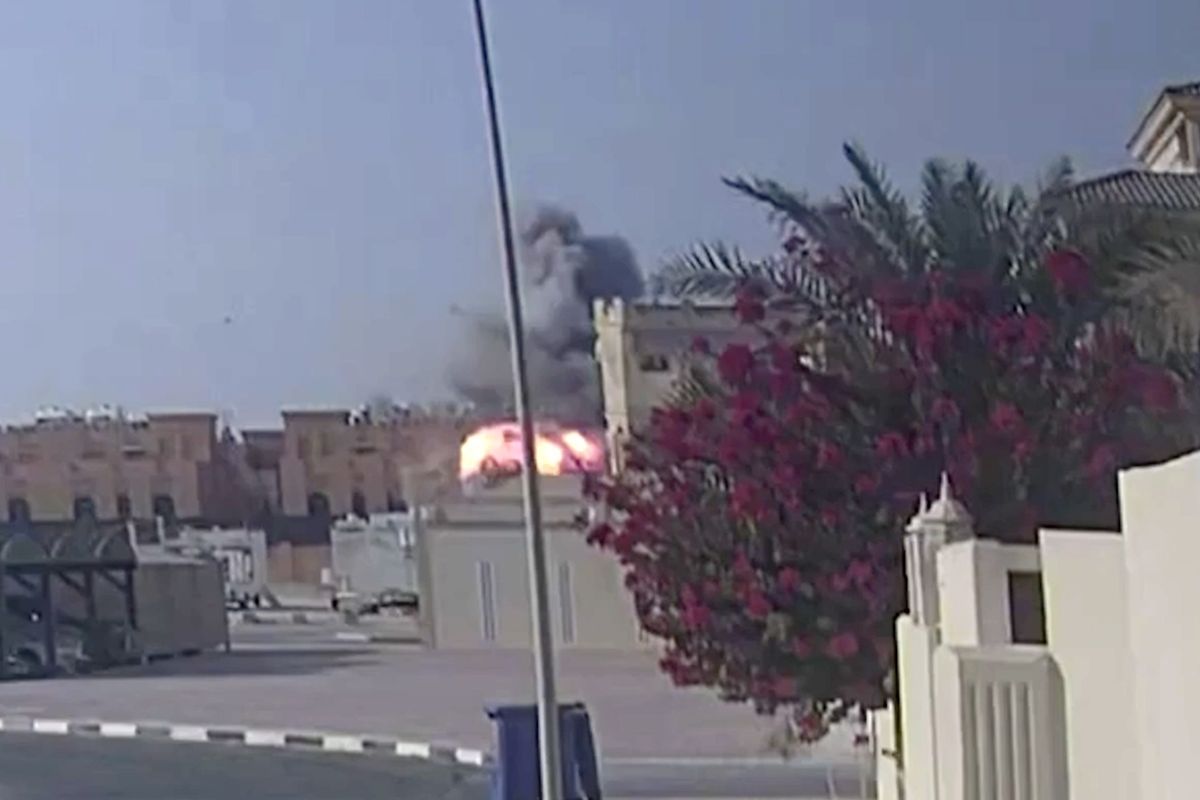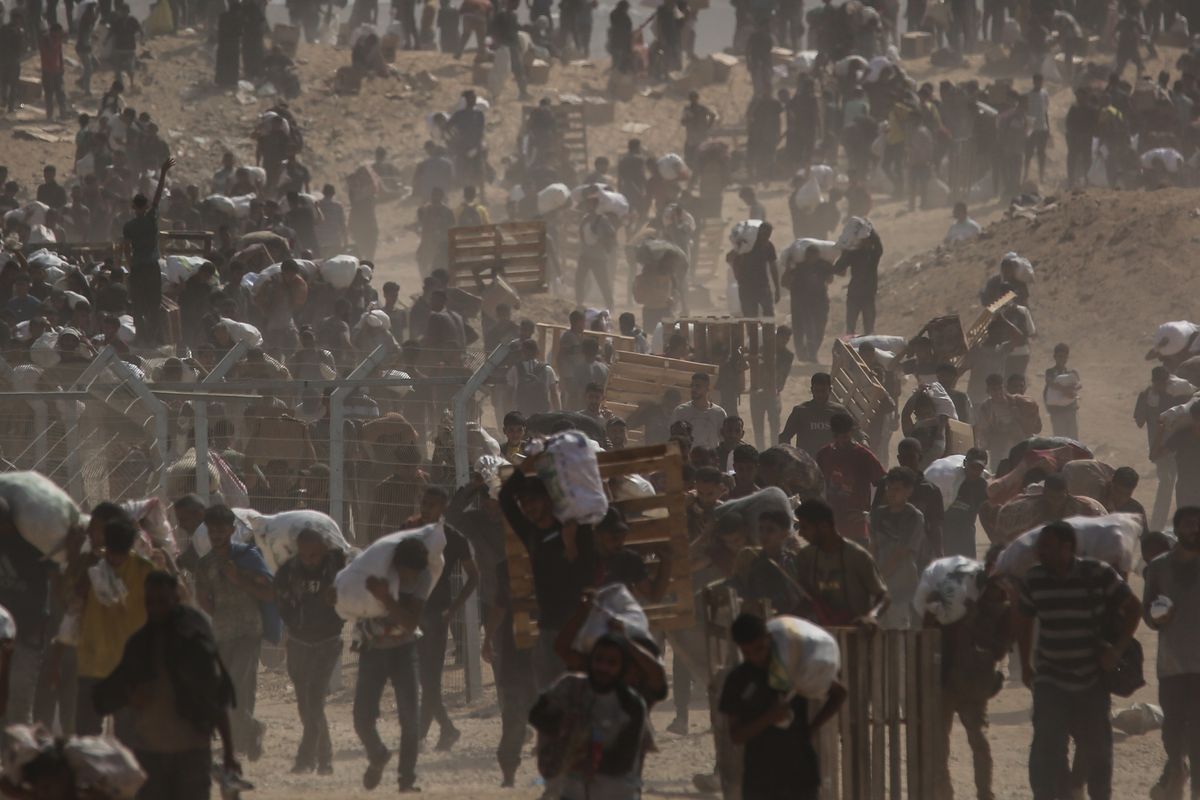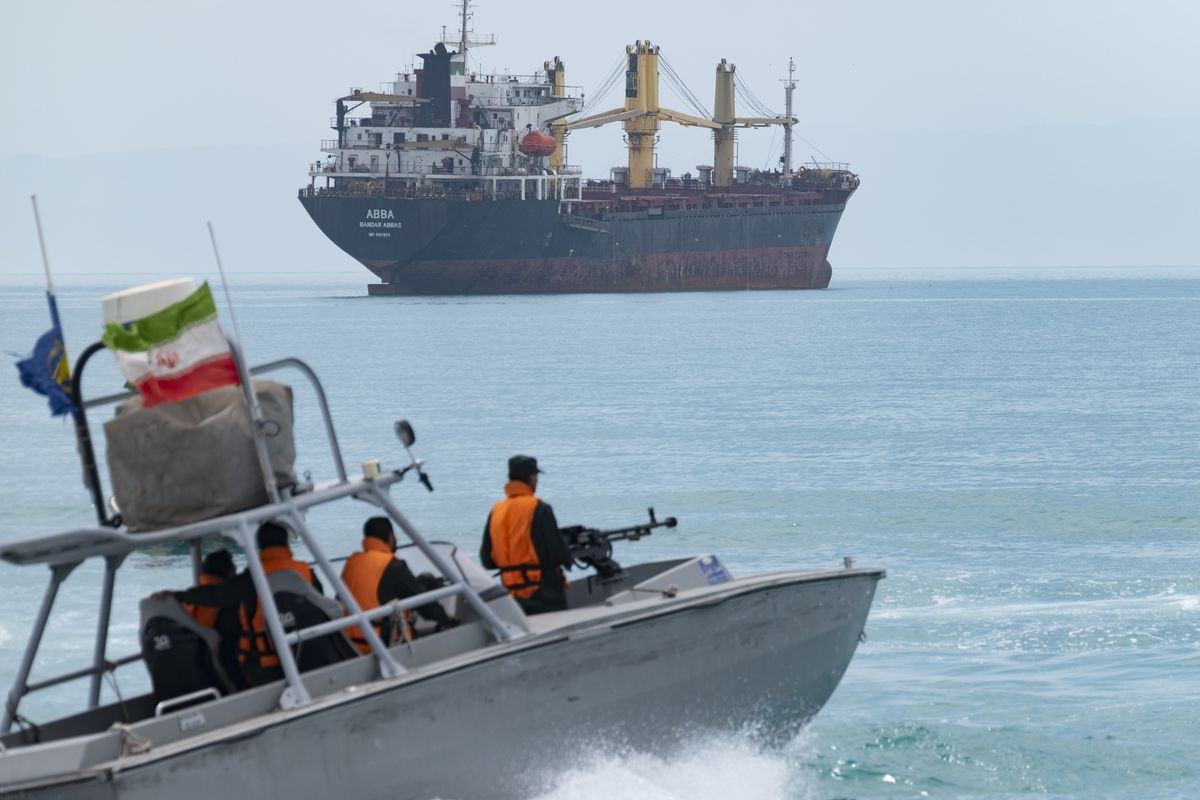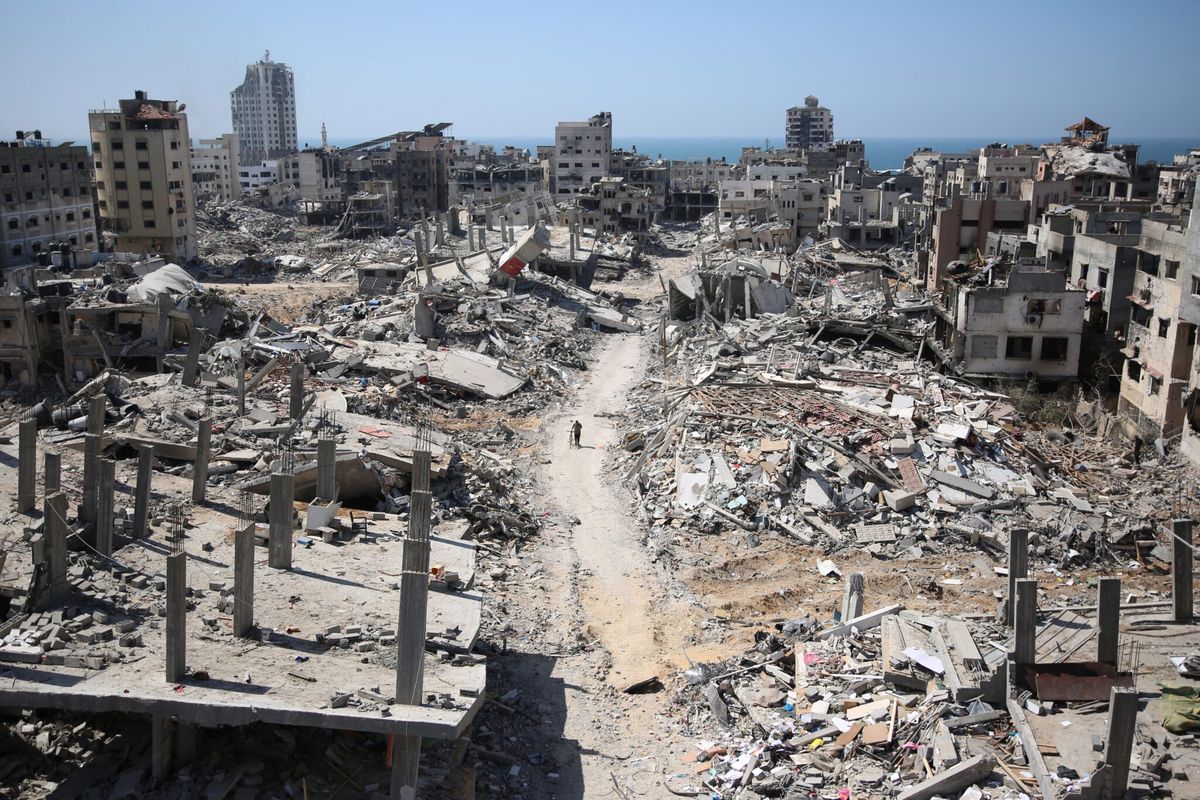SUBSCRIBER+EXCLUSIVE REPORTING – The United Nations is warning of a “slaughter” if Israel launches a ground assault in Gaza’s southernmost city as Israeli Prime Minister Benjamin Netanyahu continues to rout out what remains of the Hamas terrorist group, bringing a near “apocalyptic” reality to Rafah.
Israel says it is making plans to evacuate Palestinian civilians. More than a million of them are now in Rafah, many having been pushed from their homes further north in Gaza when Israel launched its initial ground operations.
Israeli leaders publicly vowed to wipe Hamas “off the face of the earth” after the terrorist group’s deadly attack inside Israel last October that targeted, tortured and killed civilians. Talks aimed at reaching a ceasefire deal in exchange for the release of the remaining 134 hostages appear to be stalling in Cairo, opening the way for a possible Israeli ground offensive.
“I actually believe that Prime Minister Netanyahu is right to want to destroy Hamas,” Cipher Brief Expert General David Petraeus (Ret.) told CNN this week. “I don't believe this is an organization with whom you can reconcile, or you can leave them still alive. And keep in mind, by the way, “destroy” doesn't mean every single last leader and member. It just means to render the enemy incapable of accomplishing his mission without reconstitution.”
The definition of “destroy” may be viewed differently by Israeli Prime Minister Benjamin Netanyahu as Israel focuses on targeting the Hamas leaders who are still alive.
“Its senior leadership is likely in Rafah,” former National Intelligence Manager for Iran at the Office of the Director of National Intelligence Norm Roule told The Cipher Brief.
Hamas reportedly has four remaining functional battalions that have survived Israeli targeting and remnants of the group continue to operate in Khan Younis, where Israeli Intelligence officials believe Hamas leader Yahya Sinwar is also in hiding, but unable to effectively communicate with his men.
“No one should underestimate this challenge or the time it will take to execute,” said Roule. “The IDF must achieve multiple complex objectives during an unprecedented humanitarian challenge: the release of hostages, the eradication of Hamas leadership, and the destruction of Hamas’ above ground and subterranean military architecture in a small geography of intense sensitivity to Egypt.”
THE CONTEXT AROUND AN APOCALYPTIC REALITY IN RAFAH
- Before the war, Rafah was a mid-size city with about 280,000 people.
- A flood of refugees from northern and central Gaza caused that population to explode to more than 1.4 million. An area representing approximately 15 percent of Gaza’s geography now holds more than half its population.
- The city’s medical, sanitary, and water systems were quickly overwhelmed. Humanitarian workers have used almost apocalyptic language in their descriptions of the situation.
- Humanitarian supplies are being brought into Gaza but at a level far below what is needed.
- Scenes of the genuine suffering of Palestinians are being broadcast throughout the Arab and Muslim world, impacting public opinion.
The Cipher Brief tapped Norm Roule to help provide deeper context around what a potential ground offensive in Rafah could mean.
Norman Roule, Former National Intelligence Manager for Iran, ODNI
Norman T. Roule is a geopolitical and energy consultant who served for 34 years in the Central Intelligence Agency, managing numerous programs relating to Iran and the Middle East. He served as the National Intelligence Manager for Iran (NIM-I) at the ODNI. As NIM-I, he was the principal Intelligence Community (IC) official responsible for overseeing all aspects of national intelligence policy and activities related to Iran.
THE INTERVIEW
The Cipher Brief: How can an Israeli military operation be conducted in Rafah? What are the options available to the Israeli Defense Forces (IDF)?
Roule: The short answer is that a military approach such as Israel conducted in northern Gaza is unlikely, if not unthinkable, absent a massive relocation of refugees. Israeli Prime Minister Benjamin Netanyahu has publicly assured the international community that Israel will develop a detailed plan to arrange for safe passage of non-combatants. The enormous size of the refugee population means that any potential transfer will take considerable time, impacting the length and intensity of IDF operations. Hamas may well oppose the departure of these refugees.
No one should underestimate this challenge or the time it will take to execute. The IDF must achieve multiple complex objectives during an unprecedented humanitarian challenge: the release of hostages, the eradication of Hamas leadership, and the destruction of Hamas’ above ground and subterranean military architecture in a small geography of intense sensitivity to Egypt. Many refugees fled their homes in north Gaza for Khan Younis and then moved to Rafah. Any new transfer would be the third move for this exhausted population. If the IDF does decide to move the refugees, it only has a few options and may well employ several at once.
First, it could move the refugees north into areas that the IDF has cleared of Hamas fighters. Infrastructure is severely damaged in these areas, and even in north Gaza, some fighting continues.
Next, the IDF could establish a new haven near the Mediterranean, such as Al-Mawasi, which is located about six miles northwest of Rafah. Israel would probably prefer this option, but the area appears too small for such a large population.
Also, the IDF may be forced to operate around civilians who remain in Rafah. This would likely play out in a manner in which the IDF divides the city into grids, shifting populations as the battle requires. Civilian casualties will be highest here. Tunnel clearing may also take longer if the IDF must work around a large civilian population living above tunnel entrances.
Last, there is the option of gaining Egypt’s consent to allow Palestinians to enter its territory temporarily. Cairo is highly unlikely to approve this option.
We may already be seeing how the operation will play out, at least in its initial stages. The IDF has executed multiple special operations and air operations in Rafah to free hostages and eliminate militant commanders. These operations appear to be carefully planned and heavily reliant on intelligence. They seek to minimize casualties but have difficulty doing so when Hamas counterattacks from civilian positions.
The world won’t want the IDF to rush into a military operation in Rafah, both to protect civilians and the fragile negotiations aimed at releasing hostages. At the same time, the extreme suffering of the Palestinians and demands to obtain the release of hostages are creating mounting political and diplomatic pressure on Israel, the US, and regional governments.
Hamas will want to avoid any action that relieves any of this pressure and probably hopes that the international community will ultimately force Israel to end hostilities, allowing Hamas to survive and declare victory. Tehran would also trumpet its proxy’s survival as a signal defeat of the West.
The Cipher Brief: Do we have any sense of Hamas’ current capacity?
Roule: Hamas’ military architecture has been severely damaged. The bulk of its available rocket and missile force has likely been destroyed or launched in one of the 13,000 firings against Israeli civilians. Most of its battalions and military industry have been destroyed. Dozens of experienced Hamas commanders and intelligence officials are dead or captured. Its senior leadership, likely in Rafah, and reportedly four functional battalions, survive. Remnants continue to operate in Khan Younis. Hamas remains a deadly force using tunnels (especially in Rafah) and civilians as protection, but its offensive capacity has been significantly reduced.
The Cipher Brief: What are the consequences if Israel fails to execute a Rafah operation and Hamas survives?
Roule: First and foremost, this would reduce the suffering of the Palestinian people, whom Hamas will relish using as shields and propaganda. Hostage talks might receive a boost, and this could delay the IDF assault on Rafah, perhaps for weeks. If Hamas believes its survival is at stake, it will likely extend hostage talks for as long as possible.
For Israel – and likely for the region and the West – there would be profound consequences if Hamas leadership or its military capability survives. Netanyahu has claimed such a move would mean Israel losing the war, and here he may well be right. Hamas’ oppression of the Palestinian people would continue, and Iran would do everything it could to replenish Hamas’ depleted armories and treasury.
Hamas will claim survival as a victory, emboldening other Iranian proxies who will see the merit in using local populations as a tool to outlast Western-style adversaries in a conventional conflict. Hamas would seek to remain the dominant force in Gaza and would seek to leverage its survival to dominate Palestinian politics. If a two-state solution and additional Arab-Israeli normalization seem far away today, it will recede even further in such a case. No Israeli politician could accept a “Hamasistan” on Israel’s borders.
Arab leaders will be muted in public but will privately express great concern about the regional consequences of a Hamas-dominated state on the borders of Jordan, Egypt, and Saudi Arabia. Worse, their calls for a Palestinian state in recent weeks will make it difficult for them to renounce any Hamas-dominated polity. If Hamas were to dominate Gaza and the West Bank, it would mean the establishment of yet another Iranian proxy-dominated country, joining Lebanon, Yemen, Syria, and Iraq to cement Iran’s destabilizing influence in the region.
The Cipher Brief: Where this is happening also has historical significance in the Arab world. What do we need to know about Rafah itself?
Roule: In terms of history, the city is ancient, at least three thousand years old. It was much better known in centuries past, when it was the site of some of the region’s most important battles, including an extraordinary battle of armies in 217 BC in one of the ancient world’s most consequential events and one of history’s largest battles of armies using elephants as weapons. The battle involved the two superpowers of the day – the Ptolemies and the Seleucids – and ended with a victory that put the area under Egyptian control for a couple of hundred years.
Moving to our era, Israel occupied the city from the end of the 1967 War until 1979. As part of the Israeli-Egyptian peace treaty, the town was split between Egypt and Israel. A 100-meter strip of land called the Philadelphi Line became a buffer zone between the two countries. Jumping forward to 2005, Rafah was divided between Egypt and the Palestinian National Authority, with Israel retaining counterterrorism oversight, including the right to refuse entry of anyone to Gaza. During this period, Israel and Egypt agreed to cooperate to prevent Hamas or other Palestinian militants from using the crossing to import weapons to Gaza.
Crossings have remained irregular since 2006-2007. Periodic security incidents compelled both Israel and Egypt to restrict crossings or close the site for extended periods. Hamas often refused to allow the Palestinian Authority to control the Palestinian side of the border. That point underscores that in addition to Israel and Egyptian challenges, Palestinian infighting is part of the crossing’s complicated history.
The Rafah crossing was closed following the October 7 Hamas attacks on Israel but later reopened to allow the entry of humanitarian aid and the exit of foreigners and wounded Palestinians. Unfortunately, these periods required considerable diplomatic effort following Israeli attacks on Hamas forces near the border, disagreements over how to manage foreign aid, and the need to assure Cairo that a reopening would not lead to a flood of Palestinian refugees.
The history of the crossing is also a history of some of the most aggressive tunneling operations outside the US border. Smugglers used these tunnels to import a wide array of civilian goods, fuel, narcotics, weapons, money, and personnel. At one point, even Palestinian Authority head Mahmud Abbas called for the destruction of the tunnels, given their impact on Egyptian and Palestinian stability. Egypt and Israel each undertook major, and even controversial, steps to locate and close the tunnels. For example, just as Israel is considering using seawater to flood Hamas’ tunnel network today, Egypt undertook similar operations in 2015.
The Cipher Brief: Let’s talk about other regional actors. What are the drivers and options facing Saudi Arabia and other Arab countries?
Roule: All the region’s countries have vehemently opposed any military operation against Rafah. Saudi Arabia and the moderate Arab countries continue to demand a ceasefire, expanded humanitarian aid for Palestinians, and the establishment of a time-fixed process to achieve a two-state solution. Recognition of Israel by Riyadh and others will rest upon tangible evidence of progress. These countries are likely to be generous donors to Gaza’s costly reconstruction, but not if their aid funds Hamas, corruption, or infrastructure destined to be destroyed in Israeli counterterrorism operations.
There are many drivers for Arab diplomacy, but foundational among them is the belief that a permanent solution to the Israel-Palestinian issue undermines the malign adventurism of Iran and its proxies while simultaneously strengthening the regional economic and social transition already underway in Saudi Arabia, the United Arab Emirates, and Bahrain. This position is consistent with US policy on the region.
The Cipher Brief: What about Egypt? Why has it so adamantly opposed the entry of Palestinian refugees?
Roule: Egypt faces a complicated situation. It firmly stands with the Palestinians and would welcome the destruction of Hamas but cannot allow Palestinian refugees to flood the Sinai. At the same time, Cairo must find a way to help end a conflict that has brought tremendous economic pain in the loss of revenue from the Suez Canal due to Houthi attacks in the Red Sea, a collapse of its tourist industry, and reduced foreign investment.
There is little likelihood Egypt will allow Palestinians to enter its territory. From Cairo’s perspective, doing so risks a permanent and costly new refugee presence that includes workers who would compete against Egyptians in an already struggling economy. Palestinian refugees will inevitably include militants who might revive the terrorism of past years that sometimes seemed close to an insurgency. If such militants attacked Israel from Egypt, Israel might feel compelled to respond directly against Egyptian territory.
Last but certainly not least, many in the region believe Israeli hardliners seek to permanently transfer the Palestinians to another country and replace them with Israeli settlers. Egypt has also seen what happens when the border with Gaza opens. In 2008, Hamas destroyed a substantial portion of the wall between Gaza and Egypt. Within hours, as much as one-half of Gaza’s population poured into the Sinai seeking food. Conditions for Gazans in 2008 were brutal; they are catastrophically more so at present. One can easily imagine a million or more Palestinians rushing the border. We should expect Egypt to increase its military forces and fencing on the border in the coming days.
Cairo also views the IDF’s impending Rafah operation with great concern and has warned Israel that such an operation could threaten the 1979 peace treaty. It is unlikely Egypt would seek to fracture this historic agreement but talk of a suspension threat is likely to grow louder as the IDF operations approach. At the same time, it is in Egypt’s interest for it to cooperate (albeit quietly) with Israel to destroy Hamas tunnels along the border.
The Cipher Brief: Last, what about Iran?
Roule: Iran faces some new challenges. US and UK military action in Yemen and Iraq has eroded proxy capability. Tehran cannot reinforce Hamas, and its supply lines to the Houthis are under unprecedented pressure. Iran is likely to maintain political support and the threat of violence, urging proxies to strike against Israel and the US when and as their capabilities permit. Tehran needs to keep a state of siege against Washington and Tel Aviv. Beyond that, it will likely play a longer game, looking to restore proxy material and training losses once this conflict passes. Above all, however, Iran must maintain the narrative of resistance against Israel and the US to sustain its ideological foundations.
The Cipher Brief: As always, let’s close with wild cards.
Roule: I will offer three. First, the conflict in Gaza would likely change dramatically if the IDF could kill Hamas's senior leaders. It is unclear if the Palestinian Authority or the international community are prepared for this possibility.
Next, a lengthy ceasefire to enable further hostage releases could be extended by diplomats leaving the region in a state of semi-war. That would suit Iran’s proxies, who could maintain episodic attacks while the US and West begin to question how long they need to maintain expensive deployments in the region.
Last, the regional conflict remains contained in the Middle East. As time passes, the likelihood of an attack elsewhere against US or Israeli interests will grow.
Read more expert-driven national security insights, perspective and analysis in The Cipher Brief














